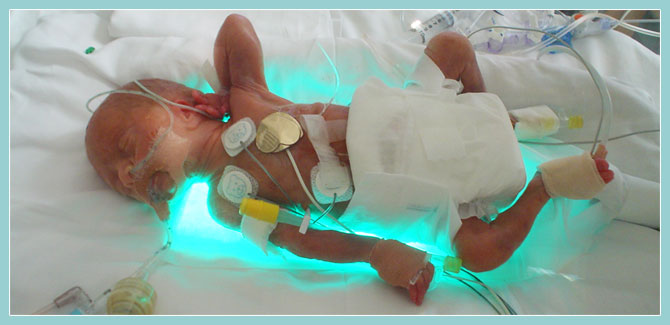Birth
Premature birth is usually heralded by warning signs. Pregnant women who notice one of the following warning signs should consult their gynaecologist immediately so that an attempt can be made to prevent a premature birth. Alternatively it is advisable to attend the Emergency Room of your maternity hospital to be assessed.
- Sudden show of blood
- More intense, unpleasant smelling discharge
- Frequent urination (beyond what is normal during pregnancy)
- Severe itching or burning in the vagina
- High Temperature
- Frequent severe diarrhoea
- Premature amniorrhexis (waters breaking)
- Premature contractions
Premature contractions manifest themselves as:
- Severe stomach cramps similar to menstruation pain
- Tightening in the inguinal flexor muscles or back
- Repeated hardening of the lower abdomen at short intervals
If an imminent premature birth is diagnosed, the mother-to-be will be admitted to a perinatal centre with a premature baby unit. Women suffering premature contractions after the 34th week are usually not treated with medication, as the state of maturity of the unborn baby is virtually equivalent to that of a full-term baby and does not represent an increased risk for they child. If the pregnant woman has not reached the 34 week point of the pregnancy and there are no acute risks for child or mother, an attempt will be made to delay the birth as long as possible, using treatment measures which may involve medical or not.

